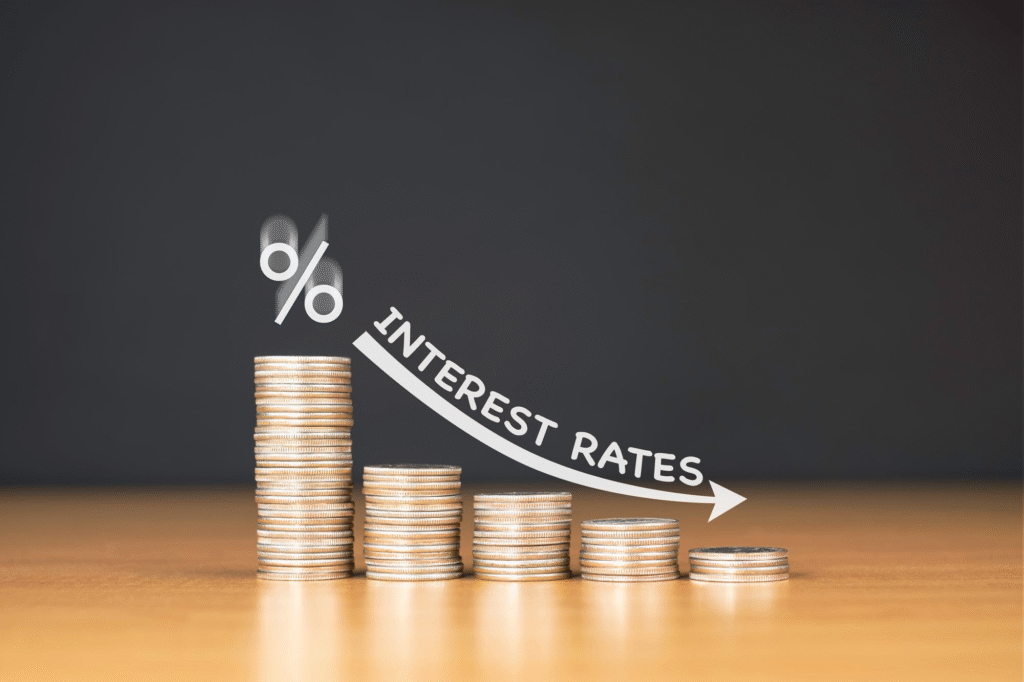Introduction
In today’s financial climate, loans are a common tool to help individuals and businesses achieve their goals. However, one of the most crucial aspects of borrowing is the interest rate. Choosing a low interest loan can mean the difference between manageable debt and financial strain. This article will help you understand everything you need to know about low interest loans—what they are, how they work, and how to qualify—so you can save significantly on your next borrowing decision.
What Are Low Interest Loans?

Definition and Overview
A low interest loan is a loan offered with a below-average interest rate, allowing borrowers to pay less over time. These can apply to:
- Personal loans
- Student loans
- Business loans
- Auto loans
- Mortgages
Low interest loans are appealing because they reduce the total repayment amount. For example, borrowing ₹5,00,000 at 7% interest saves more over the loan term compared to borrowing the same amount at 12%.
Fixed vs. Variable Interest Rates
- Fixed Interest Rate: Remains the same for the entire loan term. Predictable and stable.
- Variable Interest Rate: Changes with market trends. Potentially lower initially, but riskier long-term.
Types of Low Interest Loans
1. Personal Loans
These unsecured loans are often used for consolidating debt, medical emergencies, weddings, or home improvements.
- Best For: Individuals with strong credit history.
- Interest Rates: Typically range from 8% to 12%.
2. Home Loans (Mortgages)
Home loans with low interest help reduce EMIs over a 15- to 30-year period.
- Best For: First-time homebuyers and real estate investors.
- Interest Rates: Can be as low as 6.5%, depending on lender and market.
3. Auto Loans
Low interest vehicle loans are common for new cars.
- Best For: Buyers with good credit or large down payments.
- Interest Rates: Varies from 7% to 10%.
4. Student Loans
Some government-backed education loans offer low or subsidized rates.
- Best For: College students and postgraduate students.
- Interest Rates: Range from 4% to 8%.
5. Business Loans
These are ideal for startups or expanding businesses.
- Best For: Established businesses with good credit and revenue.
- Interest Rates: Start at 8% and up, depending on risk profile.
Benefits of Low Interest Loans
1. Lower Total Repayment
Interest is the cost of borrowing. Reducing that cost means you repay less overall.
2. Smaller EMIs
Low interest translates to lower Equated Monthly Installments (EMIs), making the loan easier to manage.
3. Faster Debt Repayment
With less money going toward interest, you can repay the principal faster and become debt-free sooner.
4. Financial Flexibility
Freed-up monthly cash allows for savings, investment, or other expenses.
How to Qualify for a Low Interest Loan
1. Maintain a Good Credit Score

- Scores above 750 are considered excellent in India.
- Lenders reward good scores with lower rates.
2. Stable Income and Employment
A steady salary and employment history reduce lending risk and increase your chances.
3. Lower Debt-to-Income (DTI) Ratio
Keep your DTI below 40%. It shows you can manage new debt responsibly.
4. Compare Lenders
Use online platforms to compare interest rates, loan terms, and fees. Public sector banks often offer lower rates than NBFCs.
5. Provide Collateral (If Required)
Secured loans often have lower interest due to reduced risk for the lender.
Where to Find Low Interest Loans
1. Banks
- Public sector banks (like SBI, Bank of Baroda) usually offer competitive rates.
- Private banks (like HDFC, ICICI) may offer convenience but slightly higher rates.
2. Credit Unions and Co-operatives
Often overlooked, they provide lower rates and personalized services.
3. Government Schemes
- PMAY for home buyers
- Mudra Loans for small businesses
- Education Loans by Indian Banks Association
4. Online Lenders and Fintech Platforms
Digital lending platforms like PaySense, Navi, and CASHe offer instant loans with competitive rates based on your creditworthiness.
Common Mistakes to Avoid When Applying
1. Not Checking Credit Score
Ignoring your credit report before applying could result in loan rejection or high interest rates.
2. Ignoring Hidden Charges
Processing fees, prepayment penalties, and insurance charges can raise your total loan cost.
3. Choosing the Longest Tenure
While it reduces EMIs, longer terms increase total interest paid.
4. Applying to Too Many Lenders
Each application triggers a hard inquiry, which lowers your credit score.
Strategies to Get the Lowest Possible Rate
1. Apply During Promotional Periods

Festive seasons often come with discounted loan rates.
2. Use Pre-approved Loan Offers
Banks offer low-rate pre-approved loans to existing customers with a clean history.
3. Opt for Auto-Debit Payment
Some lenders give rate concessions if you opt for auto-debit from your account.
4. Negotiate
If you have a strong profile, negotiate with multiple lenders to get the best offer.
How Low Interest Impacts Long-Term Financial Health
1. Higher Credit Score
On-time repayments on low-cost loans boost your score, enabling cheaper loans in the future.
2. Better Investment Opportunities
Money saved from interest payments can be invested in mutual funds, stocks, or retirement plans.
3. Increased Loan Eligibility
Banks see low-risk borrowers more favorably for larger or future loans.
Low Interest Loan vs. 0% Interest Offers
While 0% schemes (like those offered in retail stores) seem ideal, they often include hidden costs:
| Feature | Low Interest Loan | 0% Interest Scheme |
|---|---|---|
| Transparent Terms | Yes | Often unclear |
| Credit Report Impact | Moderate | Can impact if defaulted |
| Processing Charges | May Apply | Usually higher |
| Availability | Banks & Fintechs | Retailers & NBFCs |
Risks of Chasing the Lowest Rate
- Scams and Fraudulent Lenders: Extremely low rates may be bait.
- Overborrowing: Low EMIs can tempt borrowers to take more than needed.
- Prepayment Restrictions: Some low-rate loans come with prepayment penalties.
Always read the fine print and verify the lender’s credibility.
Also Read : Steps To Secure A Loan Credit Union For Your Financial Needs
Conclusion
Low interest loans are a financially smart choice for borrowers who want to save money and repay loans comfortably. However, it’s essential to understand the types available, assess your credit profile, compare lender offers, and avoid common pitfalls. Whether you’re planning a home purchase, consolidating debt, or funding your education, securing a loan at the best possible rate can significantly improve your financial health and stability.
FAQs
1. What is considered a low interest rate for a personal loan?
In India, any rate below 10% is considered low for a personal loan, depending on the borrower’s profile.
2. Can I negotiate interest rates with my lender?
Yes, if you have a high credit score and stable income, you can negotiate for better terms.
3. Are fixed interest loans better than variable ones?
Fixed rates offer stability, while variable rates may be cheaper initially but can fluctuate.
4. Do government schemes offer low interest loans?
Yes. Schemes like PMAY, Stand-Up India, and Mudra Loans offer subsidized rates.
5. Will applying for a low interest loan affect my credit score?
Only if you apply to multiple lenders at once. One or two inquiries are manageable.
6. Can I switch from a high interest loan to a low interest one?
Yes, through loan refinancing or balance transfer, depending on lender policy.

